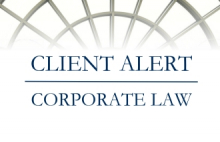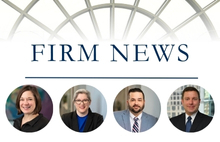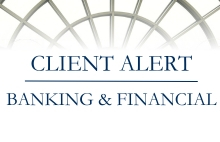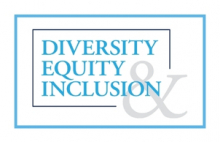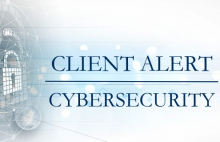The Paycheck Protection Program Flexibility Act Makes Significant Changes to the PPP
June 4, 2020On June 3, 2020, the Senate passed the Paycheck Protection Program Flexibility Act (the “PPP Flexibility Act”), which was previously passed by the House of Representatives and will now go to President Trump for his signature. This client alert explains the key changes to the Paycheck Protection Program (PPP) made by the PPP Flexibility Act that borrower and lenders need to be aware of. For our prior alerts relating to PPP, click here.
It remains to be seen how the Small Business Administration (SBA) and the U.S. Department of the Treasury (“Treasury”) will implement the changes to the PPP made by the PPP Flexibility Act. We expect that existing regulations and official guidance will be updated, and perhaps new regulations and official guidance will be issued to address these changes.
Key Takeaways of the PPP Flexibility Act
The PPP Flexibility Act:1
- extends the covered period for forgiveness (the “Covered Period”) from eight weeks to 24 weeks, but provides that in no event may the Covered Period end after December 31, 2020;
- extends the PPP availability period to December 31, 2020 from June 30, 2020 (although funds may be exhausted sooner);
- extends the restoration deadline to rehire employees and restore salaries and wages to December 31, 2020 from June 30, 2020;
- provides the following new exemptions to the FTE Reduction: (1) an exemption based on inability to rehire or to hire similarly qualified employees; and (2) an exemption for borrowers that are unable to return to the same level of business activity as such business was operating at before February 15, 2020, due to certain governmental requirements or guidance;
- reduces the minimum payroll costs required to be included in the loan forgiveness amount to 60% from 75%;
- permits borrowers with existing PPP loans to elect the original eight-week covered period beginning on the date of the origination of the PPP loan, but omits any provision for the “Alternative Payroll Covered Period” introduced in the PPP Loan Forgiveness Application and described in the Interim Final Rule on Forgiveness (for our prior alert on this topic, click here);
- extends the deferral period (principal, interest, and fees) until the earlier of: (1) the date on which the amount of forgiveness is remitted to the lender; and (2) the date that is ten months after the end of the borrower’s covered period;
- removes the prohibition on PPP borrowers deferring payroll taxes under Section 2302 of the CARES Act; and
- for new PPP loans only, extends the maturity date to five years from two years.
Extension of Covered Period
The PPP Flexibility Act extends the Covered Period from eight weeks to 24 weeks but provides that in no event may the Covered Period end after December 31, 2020.
Salary/Hourly Wage Reduction
With a longer Covered Period, a borrower has more time to spend its PPP loan proceeds on costs eligible for forgiveness. A borrower could wait to bring back its employees or bring back its employees over time but still spend a sufficient amount of its PPP loan on payroll costs to avoid a Salary/Hourly Wage Reduction for more on the Salary/Hourly Wage Reduction, see our prior client alerts here and here). This flexibility would be particularly beneficial to borrowers whose operations have been impaired by stay-at-home executive orders and other governmental restrictions.
FTE (Full-Time Equivalency) Reduction
PPP borrowers must also determine whether the FTE Reduction will reduce its loan forgiveness amount. Under the FTE Reduction, a borrower’s PPP loan forgiveness amount will be proportionally reduced by a reduction in the borrower’s total average weekly full-time equivalency (FTE) during the Covered Period in comparison to its average weekly FTE during the applicable reference period (which is generally either the period February 15, 2019 through June 30 2019, or the period of January 1, 2020 through February 29, 2020), unless the FTE Reduction Safe Harbor applies. For more on the FTE Reduction and the FTE Reduction Safe Harbor, see our prior client alerts here and here.
The PPP Flexibility Act adds new exemptions to the FTE Reduction that could help borrowers avoid an FTE Reduction. The first such exemption is for individuals that were employees of the borrower as of February 15, 2020, that the borrower is unable to rehire, and the borrower is unable to hire similarly qualified employees for unfilled positions on or before December 31, 2020, all as documented by the borrower in good faith.2 The second such exemption applies where the borrower is able to document an inability to return to the same level of business activity as such borrower was operating at before February 15, 2020, due to compliance with requirements established or guidance issued by the Secretary of Health and Human Services, the Director of the Centers for Disease Control and Prevention, or the Occupational Safety and Health Administration during the period beginning on March 1, 2020, and ending December 31, 2020, related to the maintenance of standards for sanitation, social distancing, or any other worker or customer safety requirement related to COVID–19.
Because a borrower must retain and pay its employees during the Covered Period to avoid an FTE Reduction, the borrower may rehire employees before it would otherwise choose to do so or retain employees after exhausting their PPP loan proceeds. However, doing so would require the borrower to pay its employees with other sources of liquidity for the duration of the Covered Period.
Example: The Restaurant that Waits to Reopen
Consider, for example, a restaurant that has limited its operations to carry-out only to comply with a stay-at-home executive order, and thus has a significantly reduced current need for employees. The restaurant applied for and received a PPP loan equal to 2.5 times its average monthly payroll costs (the maximum amount for which it was eligible).
Under the CARES Act, the interim final rules, and the official guidance as currently in effect:
- the restaurant must spend at least 75% of its PPP loan proceeds on payroll costs;
- at least 75% of the amount to be forgiven must be eligible payroll costs; and
- to be eligible for forgiveness, payroll costs must be paid or incurred during the eight-week Covered Period or, if elected by the restaurant, the Alternative Payroll Covered Period.
If the restaurant brought back all of its employees at the start of the eight-week Covered Period and pays full salary and wages using PPP loan proceeds, the restaurant could exhaust its PPP loan proceeds over those eight weeks. The restaurant’s business may not have fully recovered at the end of those eight weeks due to a combination of factors, including restrictions on the number of dine-in patrons and a general public that is tepid about dining out in public. As a result, the restaurant’s reduced revenues may be insufficient to maintain its current payroll in the absence of PPP loan funds, which could require, among other things, the restaurant accessing other sources of liquidity, decreasing salaries, wages, other costs, or some combination thereof in order to continue paying its employees. Such other sources of liquidity could include personal funds of the owner(s) or a loan that would increase the cash flow burden on the restaurant and which could require a personal guaranty from its owner(s).
To address these issues, the PPP Flexibility Act, once enacted, would give the restaurant additional flexibility by reducing the percentage that must be spent on payroll costs from 75% to 60% (permitting the restaurant to have a greater amount of nonpayroll costs to be forgiven), and permits the restaurant to select one of the following as its covered period for forgiveness:
- the extended 24-week Covered Period;3 or
- the “Alternative Covered Period,” which is the original covered period for forgiveness described above, commencing on the date of origination of the PPP loan and ending on the date that is eight weeks later.
The restaurant would gain additional time to spend its PPP loan proceeds on costs eligible for forgiveness by electing the 24-week Covered Period. By doing so, the restaurant would benefit from the greater flexibility in determining when and how it should reopen and hire back its employees that were terminated or furloughed, taking into account any stay-at-home executive orders and any restrictions imposed on the restaurant once the stay-at-home orders are lifted (such as limitations on the number of patrons that can dine-in at any time and other social distancing requirements). Note, however, that if the restaurant reduces salaries and hourly wages by more than 25% during the 24-week Covered Period, its loan forgiveness amount will be reduced by the Salary/Hourly Wage Reduction (unless the Salary/Hourly Wage Reduction Safe Harbor applies).
By waiting to reopen, the restaurant will have a lower average FTE during its Covered Period than during the reference period, although this may be mitigated by the FTE Reduction exemptions described above under the heading ”FTE Reduction.” If the restaurant’s average FTE for the reference period is higher than its average FTE during the Covered Period, the FTE Reduction will reduce the restaurant’s loan forgiveness amount unless the restaurant qualifies for the FTE Reduction Safe Harbor. To qualify for the FTE Reduction Safe Harbor, both of the following conditions must be satisfied:
- the restaurant reduced its FTE employee levels during the period beginning February 15, 2020 and ending April 26, 2020; and
- the restaurant then restored its FTE employee levels by not later than December 31, 20204 to its FTE employee levels in the borrower’s pay period that included February 15, 2020.
Under the FTE Reduction Safe Harbor, no FTE Reduction will apply if the restaurant restores its FTE employees at any time during 2020.
Conclusion
Borrowers and lenders will need to closely monitor how SBA and Treasury implement the PPP Flexibility Act’s changes to the PPP. We anticipate additional interim final rules and guidance will be issued. Lewis Rice will continue to monitor these developments and provide updates as needed.
Our attorneys are closely monitoring these developments as they occur and will make regular updates to our COVID-19 Resource Center. If you have any questions about the implications and disruptions of COVID-19 on your business, please reach out to one of the authors above or another member of the Task Force.
1 The changes described in this section apply to existing and new PPP loans except as noted.
2 The PPP Flexibility Act does not include the exemption described in the Interim Final Rule on Forgiveness that applies where a borrower previously reduced hours the hours of an employee and offered to restore the employee’s hours at the same salary or wages.
3 As noted above, the “Covered Period” under the PPP Flexibility Act will end on December 31, 2020
4 The PPP Flexibility Act extends the restoration deadline from June 30, 2020 to December 31, 2020.
